
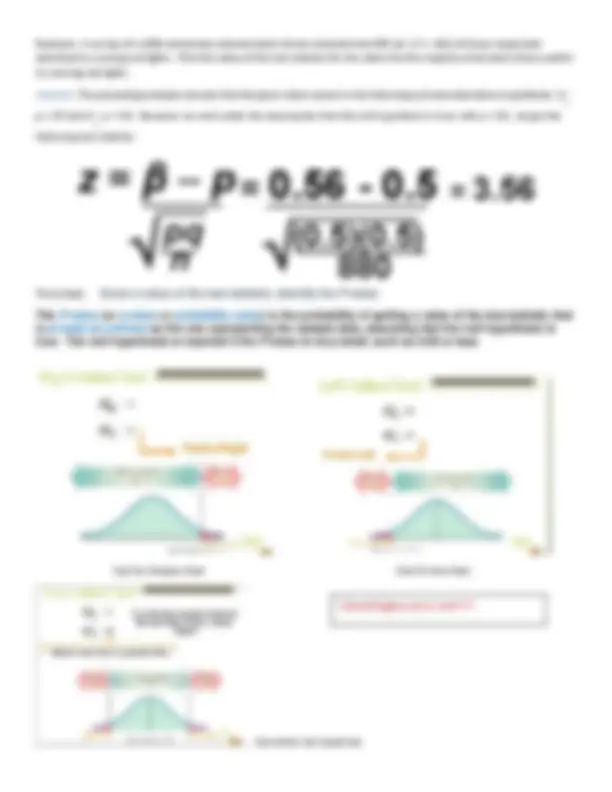
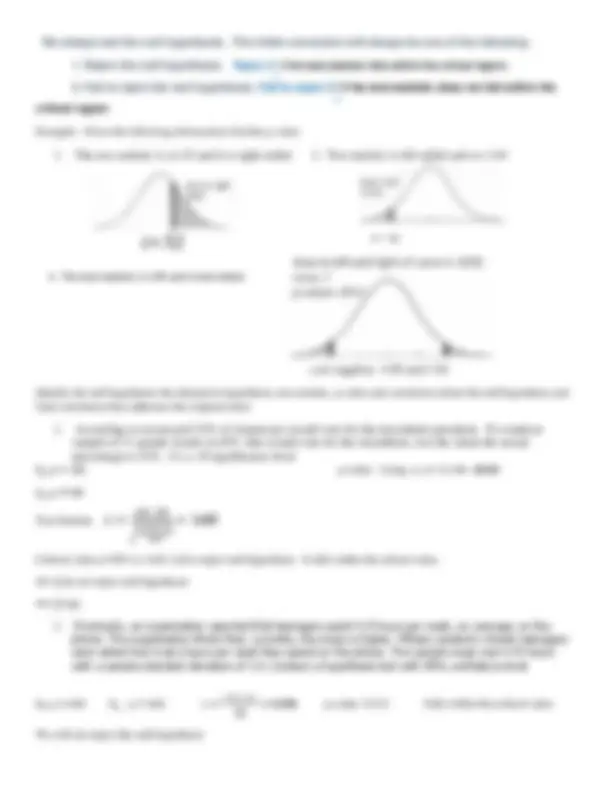
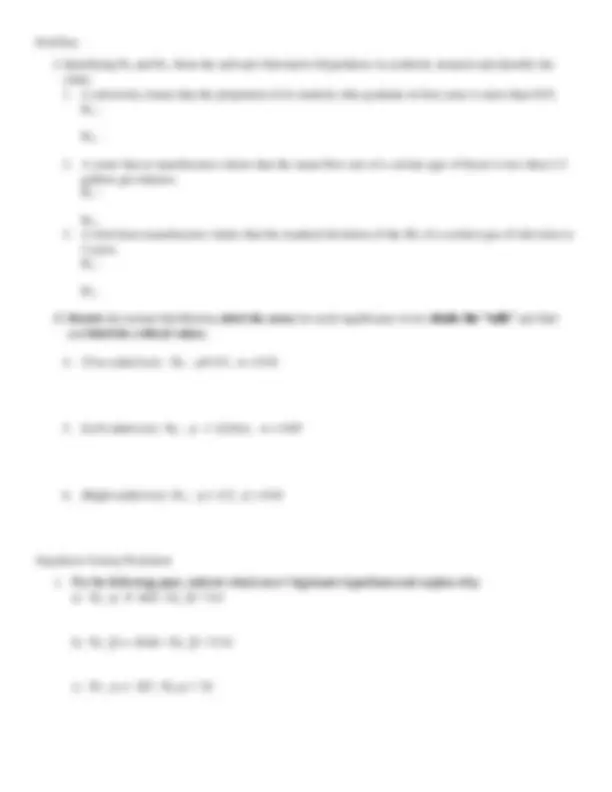
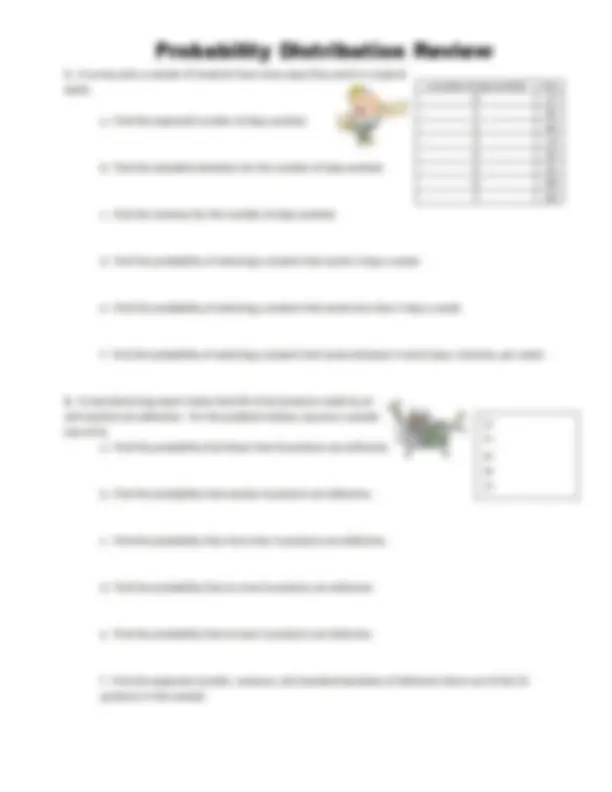
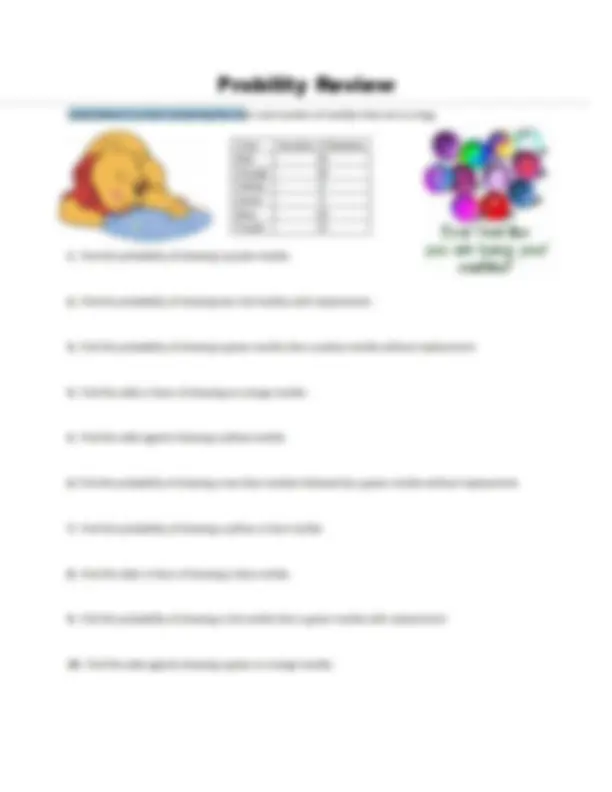
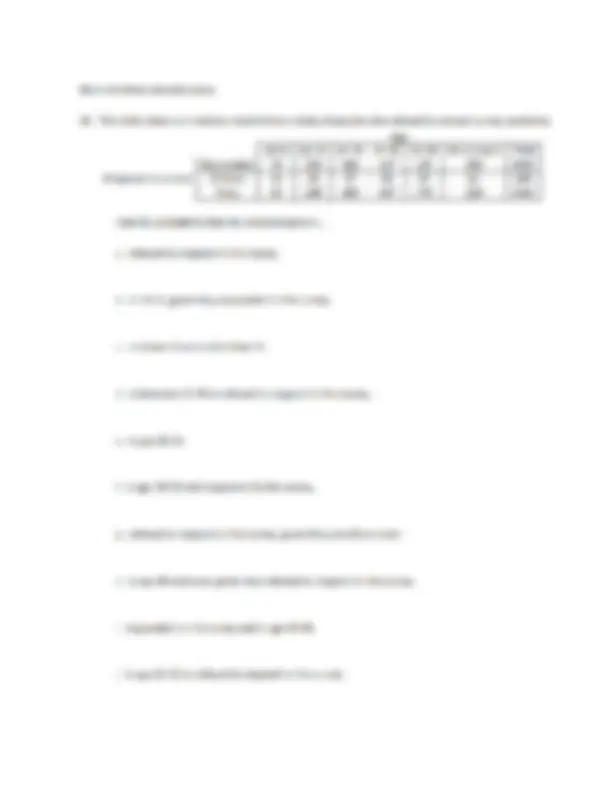


Study with the several resources on Docsity

Earn points by helping other students or get them with a premium plan


Prepare for your exams
Study with the several resources on Docsity

Earn points to download
Earn points by helping other students or get them with a premium plan
Community
Ask the community for help and clear up your study doubts
Discover the best universities in your country according to Docsity users
Free resources
Download our free guides on studying techniques, anxiety management strategies, and thesis advice from Docsity tutors
Key Components of a Hypothesis Test. First Goal: Given a claim, identify the null hypothesis and the alternative hypothesis, and express.
Typology: Study notes
1 / 10

This page cannot be seen from the preview
Don't miss anything!







Chapter 8 Hypothesis Testing Notes
In statistics, a hypothesis is a claim or statement about a property of a population.
A hypothesis test (or test of significance) is a standard mathematical procedure for testing a claim about a property of a population.
If, under a given assumption, the probability of a particular observed event is exceptionally small, we conclude that the assumption is probably not correct.
Example: Suppose we conduct an experiment with 100 couples who want to have baby girls, and
they all follow the Gender Choice “easy-to-use in-home system” described in the pink package. For the purpose of testing the claim of an increased likelihood for girls, we will assume that Gender
Choice has no effect.
Using common sense and no formal statistical methods, what should we conclude about the assumption of no effect from Gender Choice if 100 couples using Gender Choice have 100 babies
consisting of a) 52 girls?; b) 97 girls?
a) We normally expect around 50 girls in 100 births. The result of 52 girls is close to 50, so we should not conclude that the Gender Choice product is effective. If the 100 couples used no special method of gender selection, the result of 52 girls could easily occur by chance. The assumption of no effect from Gender Choice appears to be correct. There isn’t sufficient evidence to say that Gender Choice is effective.
b) The result of 97 girls in 100 births is extremely unlikely to occur by chance. We could explain the occurrence of 97 girls in one of two ways: Either an extremely rare event has occurred by chance, or Gender Choice is effective. The extremely low probability of getting 97 girls is strong evidence against the assumption that Gender Choice has no effect. It does appear to be effective.
Key Components of a Hypothesis Test
First Goal: Given a claim, identify the null hypothesis and the alternative hypothesis, and express them both in symbolic form.
The null hypothesis (denoted by H 0 ) is a statement that the value of a population parameter (such as proportion p , mean , or standard deviation ) is equal to some claimed value. H 0 : p = (NUMBER) H 0 : = (NUMBER) H 0 : = (NUMBER) Any decision is always made about the null hypothesis:
Either reject H 0
or fail to reject H 0
The alternative hypothesis (denoted by H 1
or H a
or H A
) is the statement that the parameter has a value that somehow differs from the null hypothesis. The symbolic form of the alternative hypothesis must use one of these symbols: , <, >. H A
: p or < or > ( Same NUMBER)
H A
: or < or > (Same NUMBER)
H A
: or < or > (Same NUMBER)
Example: Identify the Null and Alternative Hypothesis. Use the given claims to express the
corresponding null and alternative hypotheses in symbolic form. ℎ 0 represents the given value, ℎ𝑎 should be a compliment of it
a) The proportion of drivers who admit to running red lights is greater than 0.5.
H 0 : p = 0.5.
H a : p > 0.5,
and we let p be the true proportion of drivers who admit to running red lights
b) The mean height of professional basketball players is at most 7 ft.
b) H 0
: μ = 7 H a
: μ < 7
and we let μ be the true mean height of professional basketball players
c) The standard deviation of IQ scores of actors is equal to 15.
H 0
: = 15 H a
: 15
Where is the true standard deviation of IQ scores of actors
Second Goal:
Given a claim and sample data, calculate the value of the test statistic.
The test statistic is a value used in making a decision about the null hypothesis, and is found by converting the sample statistic to a score with the assumption that the null hypothesis is true.
Very similar to critical values from the last unit. We just account for less than and greater than with one or two tails.
We always test the null hypothesis. The initial conclusion will always be one of the following:
1. Reject the null hypothesis. Reject H 0
if the test statistic falls within the critical region.
2. Fail to reject the null hypothesis. Fail to reject H 0
if the test statistic does not fall within the
critical region.
Example: Given the following information find the p-value
Identify the null hypothesis the alternative hypothesis, test statistic, p-value and conclusion about the null hypothesis and final conclusion that addresses the original claim
ℎ 0 𝑝 = .53 p-value: Using a z of 1.6 ∝=.
ℎ𝑎 𝑝 ≠ 53
Test Statistic 𝑧 =
.45−.
√(.53)(.47) 100
= 1.
Critical value at 90% is 1.645, fail to reject null hypothesis. It falls within the critical value
∝> 𝑝̂ do not reject null hypothesis
∝< 𝑝̂ reje
4.75−4. 2 √
= 0.484 p-value 0.314 Falls within the critical value
We will not reject this null hypothesis
Prob/Stat:
Hypothesis Testing Worksheet
For each of the following, a) draw and shade the curve
b) calculate the p-value of the given test statistic
Probability Distribution Review